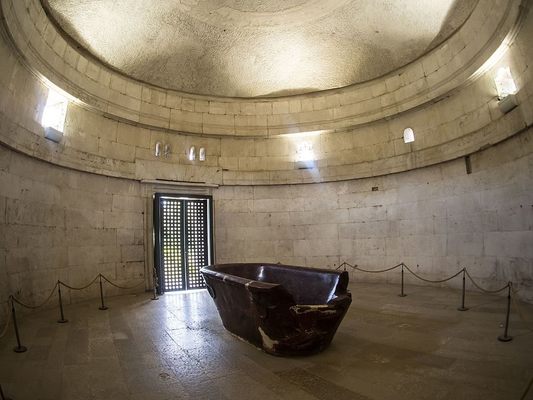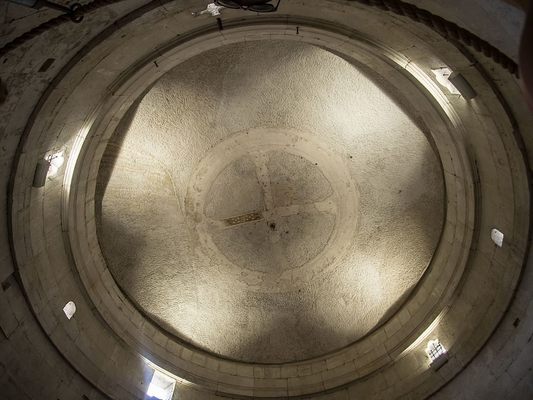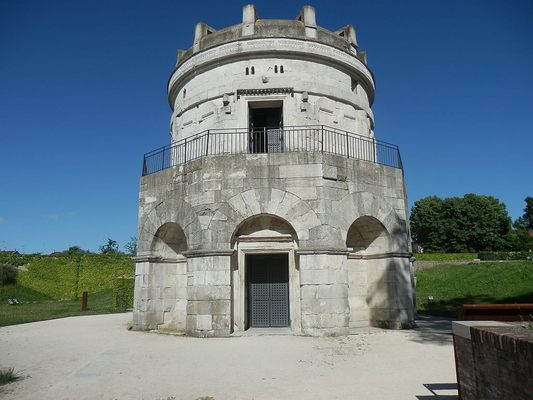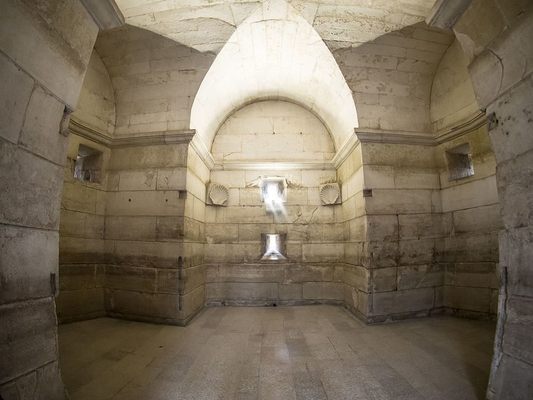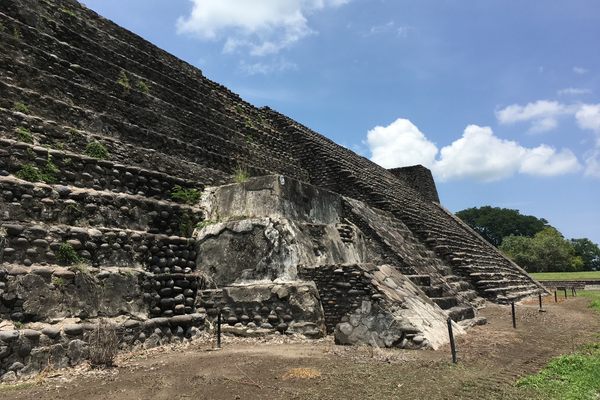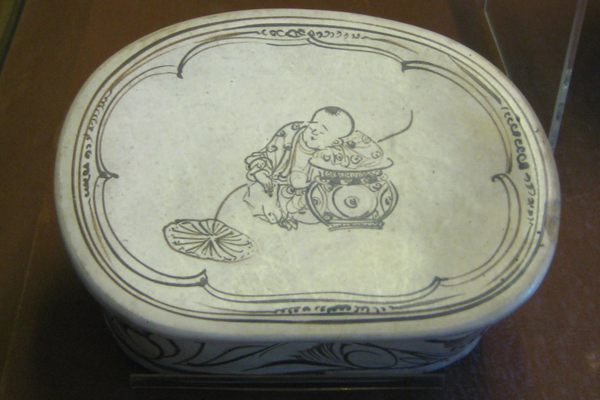About
To the casual observer, the Mausoleum of Theoderic is far from being one of the most spectacular archaeological sites in Italy, or even near Ravenna. But when you learn that the roof is made of one single stone slab weighing 230 tons, and that no one is quite sure how the builders got it up there, things get far more interesting.
At the time of his death in 526 AD, Theoderic the Great had racked up an impressive number of titles: King of the Ostrogoths, ruler of Italy, regent of the Visigoths, patricius of the Roman Empire. With such a swathe of honors to his name, it was no surprise that he wanted to build himself a tomb that would be worthy of his accomplishments in life.
In contrast to the majority of buildings in and around Ravenna that date back to this period, which were typically built of bricks, the mausoleum was constructed of carved blocks of stone imported from Istria. These were used to create the structure's two decagonal levels, the lower level being noticeably narrower than the upper.
And then there's the roof: all 230 tons of it. Measuring about 35 feet in diameter and carved from a single piece of Istrian stone, it is rimmed with 12 pierced, projecting spurs, each inscribed in Latin with the name of an apostle. The triangular holes around the roof give it the appearance of a crown, and some historians have argued that heavy ropes were passed through these holes, allowing the builders to transport and then position the massive stone. That, however, remains an open question, and not the only mystery surrounding the Mausoleum of Theoderic.
Delving deeper into the form and function of the mausoleum, things quickly reach Dan Brown-like proportions. Archaeoastronomical investigations using 3D modeling have suggested that the orientation of the mausoleum, including its 17 windows of varying shapes and sizes, may well be aligned with important moments within the astrological year. On the day of the Annunciation, for example, the rising sun pours through a cross-shaped window onto the wall of the tomb. And at sunset on the days of the equinoxes, the sunlight illuminates scripted bands within the mausoleum.
Other enigmatic features within the largely bare interior of the mausoleum include a small apse and a sarcophagus. The function of the apse on the upper level has long baffled historians. It is too small to accommodate an altar or other significant piece, but nonetheless appears to be an important element within the tomb, its keystone bearing a large Latin cross, which is the only sculptural element in the interior.
The bathtub-like sarcophagus, meanwhile, once held the remains of King Theodoric. Made of red porphyry, the sarcophagus has four rings carved into its sides, as well as two lion heads. As for Theodoric, his bones were scattered—and his mausoleum converted into a Christian oratory—when Byzantine general Flavius Belisarius conquered the city in 540.
Related Tags
Know Before You Go
The Mausoleum of Theodoric is located just outside the town center of Ravenna, and is easy to reach on foot. Entry is €4 and tickets are available from a small building near the entrance.
Flavors of Italy: Roman Carbonara, Florentine Steak & Venetian Cocktails
Savor local cuisine across Rome, Florence & Venice.
Book NowCommunity Contributors
Added By
Published
August 15, 2018
Sources
- http://maajournal.com/Issues/2016/Vol16-4/Full59.pdf
- https://www.european-traveler.com/italy/the-mausoleum-of-theodoric-in-ravenna/
- http://www.thebyzantinelegacy.com/mausoleum-theoderic
- https://www.thevintagenews.com/2017/01/28/built-in-520-ad-as-his-own-tomb-the-mausoleum-of-theoderic-is-a-monument-exhibiting-roman-art-in-its-purest-form/
